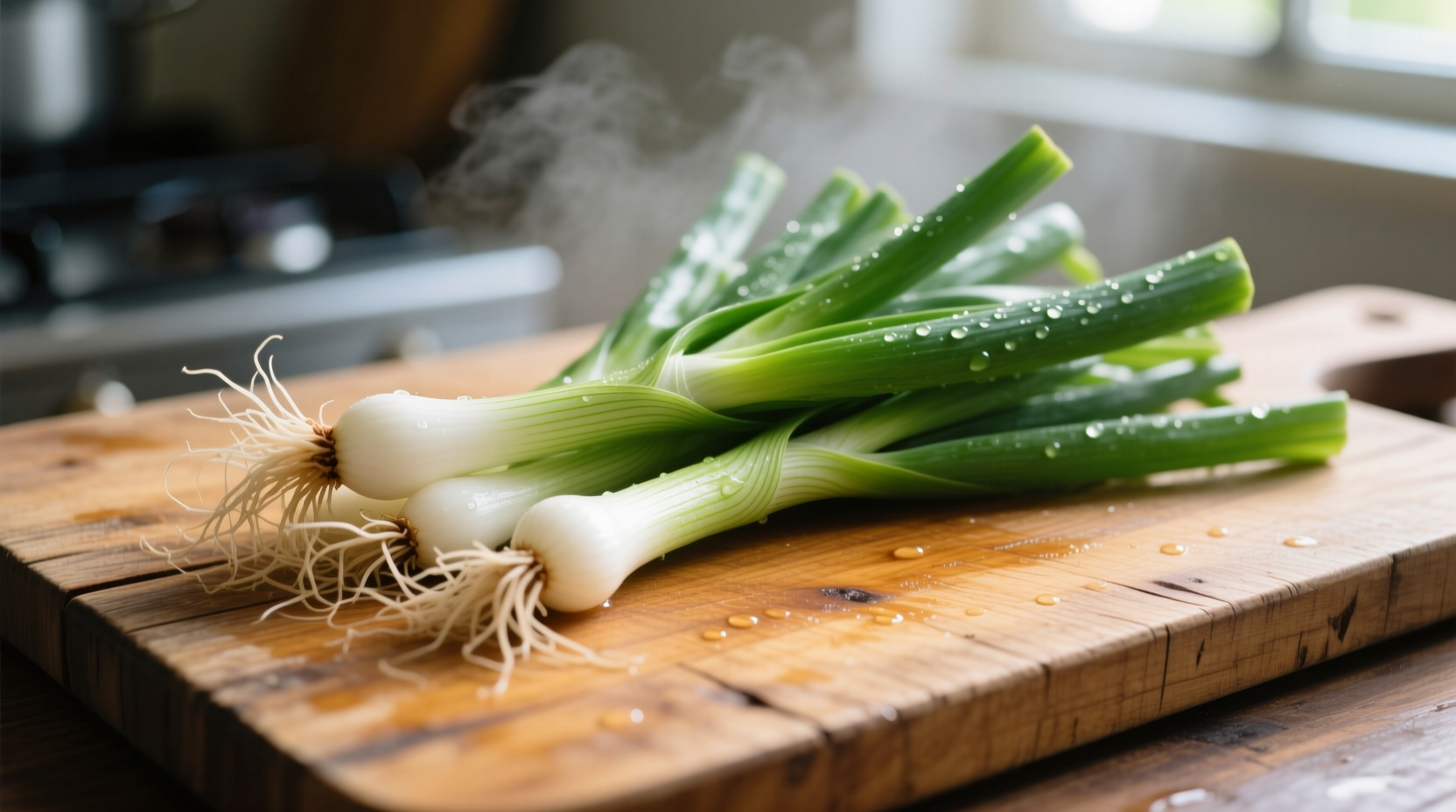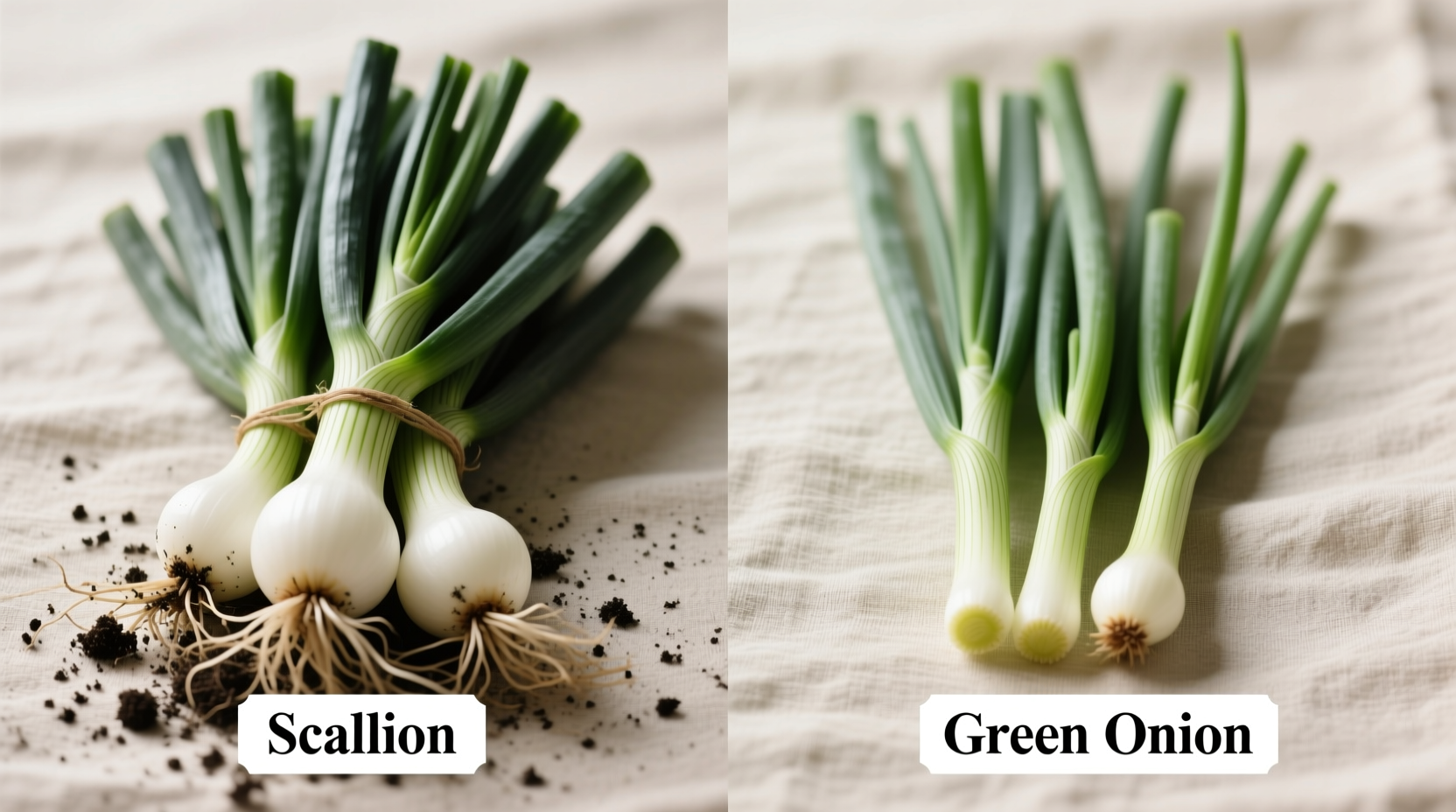Why Two Names for One Vegetable?
Despite widespread confusion, scallion vs green onion represents a terminology difference rather than a botanical one. The dual naming stems from regional language preferences rather than actual distinctions in the plant itself. In most American grocery stores and culinary contexts, these terms are used interchangeably for the same immature onion variety.
| Terminology | Common Usage Regions | Botanical Reality |
|---|---|---|
| Scallion | Northern US, Canada, UK | Allium fistulosum (same plant) |
| Green Onion | Southern US, Australia | Allium fistulosum (same plant) |
| Spring Onion | UK, Europe | Sometimes refers to small bulb varieties |
Identifying True Scallions/Green Onions
When shopping for fresh scallions versus green onions, look for these characteristics that distinguish them from similar alliums:
- Slender white base without a developed bulb (unlike spring onions which may have small bulbs)
- Hollow green leaves that remain tender throughout
- Mild onion flavor without the intense heat of mature onions
- No purple tinge at the base (which would indicate a different variety)

Practical Cooking Applications
Understanding scallion vs green onion substitution matters less than knowing how to use them properly in recipes. Both terms refer to the same ingredient, but culinary applications vary based on which part you use:
White vs Green Portions
The white base offers a more pronounced onion flavor, making it ideal for:
- Sautéing as an aromatic base for stir-fries
- Adding to soups and stews during cooking
- Blending into sauces and dressings
The green portion provides milder flavor and visual appeal, perfect for:
- Garnishing finished dishes
- Adding to salads raw
- Creating colorful toppings for soups
Storage and Selection Tips
When selecting fresh green onions or scallions, choose bunches with crisp, bright green leaves and firm white stems. Avoid any with yellowing tips or slimy bases. For maximum freshness:
- Store upright in a glass with 1 inch of water, covered with a plastic bag in the refrigerator
- Change water every 2-3 days to extend freshness up to 2 weeks
- Do not wash until ready to use to prevent premature spoilage
Common Misconceptions Clarified
Several persistent myths surround scallion versus green onion terminology. Let's address the most common ones with verified information:
Myth: Scallions have no bulb while green onions do
This confusion likely stems from regional terminology differences. According to the USDA Agricultural Research Service, both terms refer to the same stage of Allium fistulosum development without a significant bulb formation. What some call "spring onions" with small bulbs are actually a different variety or more mature stage.
Myth: They're different from shallots
Shallots (Allium cepa var. aggregatum) are completely different plants with clustered bulbs and a more complex flavor profile. Unlike scallions vs green onions which are identical, shallots belong to a separate botanical category entirely. The National Onion Association confirms this distinction in their botanical classification guides.
When Substitution Matters
While scallion and green onion are interchangeable, certain culinary situations require attention to detail:
- Raw applications: Use the green portions for delicate salads where strong onion flavor would overwhelm
- Cooked dishes: The white base holds up better to heat and provides more robust flavor in stir-fries
- International recipes: French recipes specifying "échalote" actually mean shallots, not scallions
Professional chefs at the Culinary Institute of America emphasize that understanding these subtle usage differences matters more than the naming confusion. Their research shows that the white portion contains higher concentrations of allyl sulfides (the compounds responsible for onion flavor), making it better suited for cooked applications where flavor development is desired.
Seasonal Availability and Nutrition
True scallions/green onions are available year-round thanks to multiple growing regions, but peak season runs from late spring through early fall. According to USDA nutritional data, one cup of chopped scallions provides:
- 32 calories
- 115% of daily vitamin K needs
- 27% of daily vitamin C requirements
- Significant amounts of vitamin A and folate
Unlike mature onions, they retain more chlorophyll and water-soluble vitamins in their green portions, making the entire plant nutritionally valuable.











 浙公网安备
33010002000092号
浙公网安备
33010002000092号 浙B2-20120091-4
浙B2-20120091-4